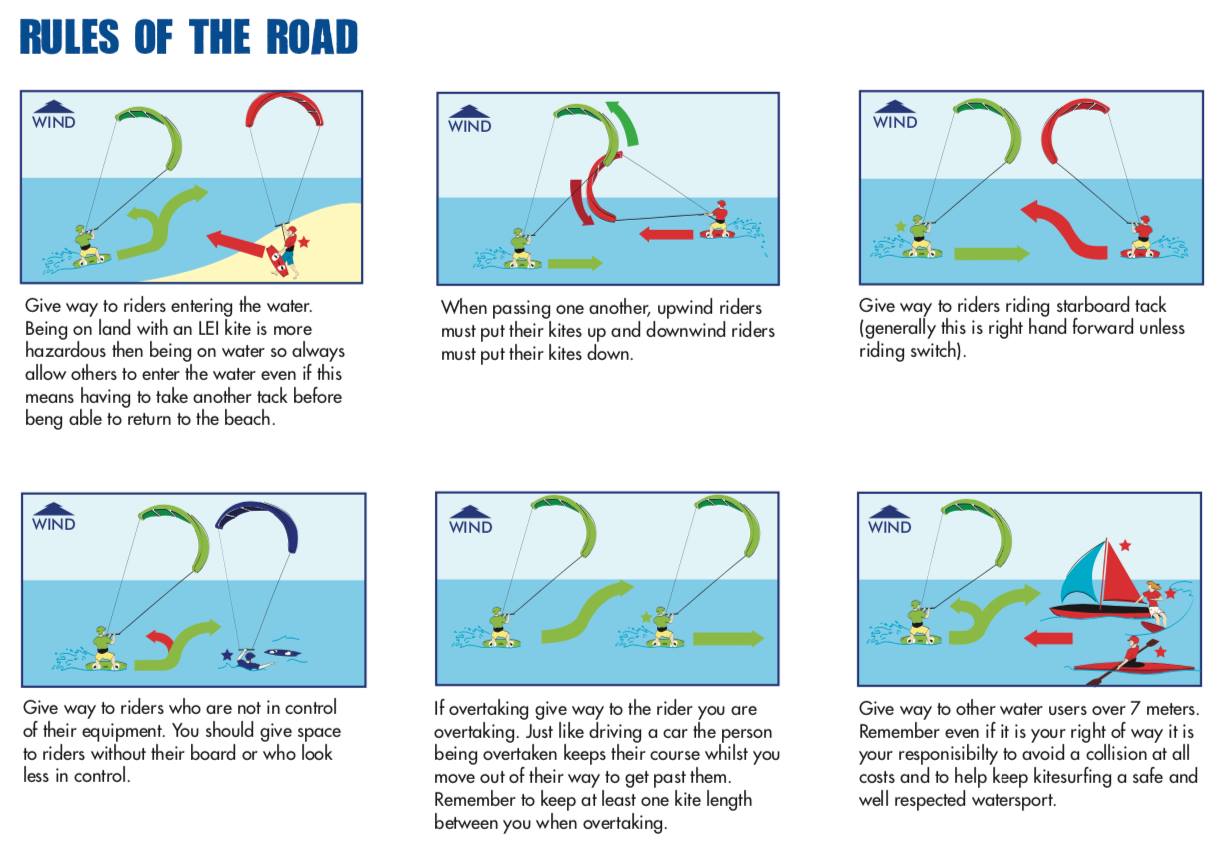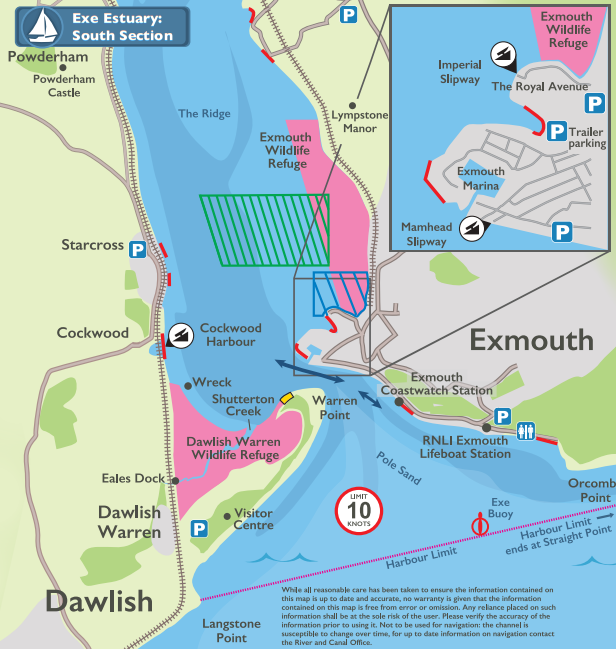Code of Conduct
This voluntary Code of Conduct has been developed in association with British Kitesports and the Exe Estuary Management Partnership and is based on common sense and co-operation.
General
Kite Surfing is an extreme sport and potentially dangerous to both the participant and others. Although flying and riding locations differ and local considerations will apply, the guidelines below will be relevant and appropriate in most situations.
You should hold third party insurance (such as you get through BKSA Membership) and have received thorough training from a qualified instructor, or, that you are competent to British Kitesports level 3.
We strongly discourage participants from attempting to teach themselves. By seeking qualified instruction you will: learn faster and with greater safety for yourself and those around; become competent and progress to a higher level more quickly; you will have more fun. Instruction is an investment that will pay for itself.
Exmouth Kite Surfing Sites
There are two kiteboarding sites in Exmouth.
- The Seafront is not for beginners. Kite surfers wishing to ride the front must be competent and able to stay upwind. There is a voluntary launch area opposite the Queens Road car park. The seafront should only be used to launch/land and never to practice land-based flying skills, especially jumping. We must keep out of the way of vessels in the Navigation Channel that runs alongside the front of the beach.
- The Duckpond is for everyone offering a large riding area where you can be pretty sure you are going to be within your depth, but always check the water is deep enough to avoid injury when falling. The duckpond can be used in most conditions; learners should arrive early, launch on the sand, and avoid kiting at high tide unless able to stay upwind. This area has a Wildlife Refuge area active from 15th September to the end of December and it’s vital we keep out of this area.
Read the spot Exmouth Kitesurfing Spot Guide for detailed information about both sites.
Safety
- Be sure that you can handle the prevailing weather conditions and know the forecast.
- Select the correct kite size for the conditions and forecast. If you don’t have an appropriately sized kite, don’t take a risk with the wrong size.
- Never tether yourself to a fixed object prior to flying a power kite.
- Ensure you fully understand the tidal currents and how they might affect the riding area. The currents off Exmouth seafront can be more like a fast flowing river and are potentially dangerous.
- Kite with a buddy or, if that is not possible, tell someone where you are and when you will be back.
- Select a safe launch site. Find out about and observe local rules and restrictions. Treat other stakeholders in the places we fly with respect.
- If at all possible, avoid asking a non-kiter to assist with launching and landing. If you must ask for help, make sure they are carefully briefed and understand the risks of getting involved.
- Take extra care at busy locations. On occasions, it might be too busy to launch safely unless a specific launch area is in operation.
- Prevent kites from re-launching by weighting them with sand or other ballast; use a ballast bag to avoid damage to your kite.
- Keep your lines away from people, animals and craft on land or water. Wind up your lines if leaving your kite. Do not leave your equipment unattended on the beach for an extended period.
- You are advised to wear a suitable helmet.
- All children under the age of 8 years old must be supervised by a responsible adult
- You should be a competent swimmer. Never ride so far away from the shore that you cannot swim back in an emergency.
- Observe beach and water zoning, navigation channels and similar.
- Unless dedicated rescue cover is available do not sail in offshore winds. If in doubt don’t go out.
- All riders should be familiar with rescue signals and participants should regularly practice deep water pack downs and self-rescue. These techniques are taught by all qualified British Kitesports instructors and schools.
- Keep a safe distance from any moored vessel, boys and boat moorings.
- Never kiteboard in or near to the bathing areas and swimmers when in use or the lifeguards are present.
- Never kiteboard through the danger area of Straight Point Firing Range when it is in use.
Rights of way
- Kiteboarders using the seafront should abide by navigation laws and must give way to all larger and less manoeuvrable vessles in and around the river and Navigation channels and maintain an adequate clearance.
- Starboard tack (right hand forward) has right of way
- The rider on the port (left hand forward) tack gives way to the rider on starboard tack.
- The upwind rider gives way to the downwind rider.
- The overtaking rider keeps clear and should pass up-wind of the rider being passed. The upwind rider should fly their kite higher and clearly signal to the other rider that they intend to pass. The downwind rider should lower their kite where it is possible to do so safely.
- The rider leaving the beach has right of way over a rider returning to the beach from the water. Before jumping check behind and downwind of you and always maintain a safe distance from other riders or obstacles. If in doubt, don’t jump!

Equipment
- Equipment manufacturer’s instructions and safety guidelines must be read and followed. Understand the limitations of the equipment and practice use of all safety mechanisms until you are familiar with them.
- Equipment must be regularly checked for wear and tear and repaired or replaced before use if required. If in doubt seek advice from an authorised dealer, approved British Kitesports instructor or a more experienced local rider.
- Always use an effective kite leash and safety system so you can depower your kite instantly in the event of an emergency, ensure your safety systems are working and you instinctively know how to use them.
- Carry a line cutter.
General
- Pay attention to your surroundings, your equipment and your fellow kiters. Think about what you are doing and take your time; your brain is your most important piece of safety equipment, so use it!
- It is recommended that you write your name, address and contact number on all your equipment using either purpose made stickers or just permenant marker pen. It will help you get your kit back should you loose it and avoid the emergency services waste time looking for you.
- If you lose your kite or board whilst on the water or land, always report you are safe to the coastguard non emergency number (02392 552100) so they do not waste time and money looking for you.
- If new or careless kiters show up at your flying site, talk to them with your friends about what´s at risk. Take the time to explain how to safely get into the sport and where to obtain qualified professional instruction.
Wildlife Refuge - Exmouth Duckpond
- The Exe Estuary has wildlife reserves and has a Guide for Water Users. Kiteboarders are asked to follow this voluntary code and observe Nature Reserve byelaws - see the Duck Pond Spot Guide

All Kitesport participants are responsible for their own safety and that of bystanders. Just because we’ve taken the care to publish this Code of Conduct we cannot be held liable for your actions. This Code of Conduct will be updated regularly as a result of continued developments in safety and kitesports equipment, consultation with local focus groups and other interested parties. This is by no means a final and definitive list of safety guidelines.